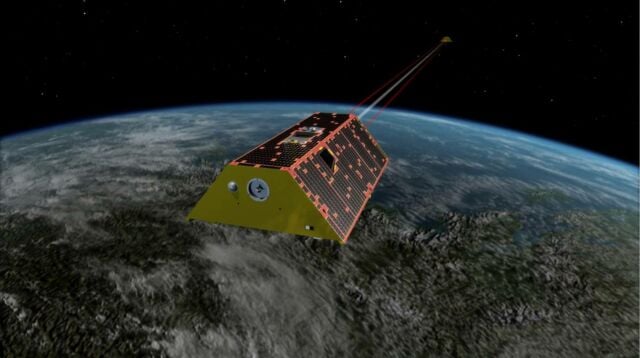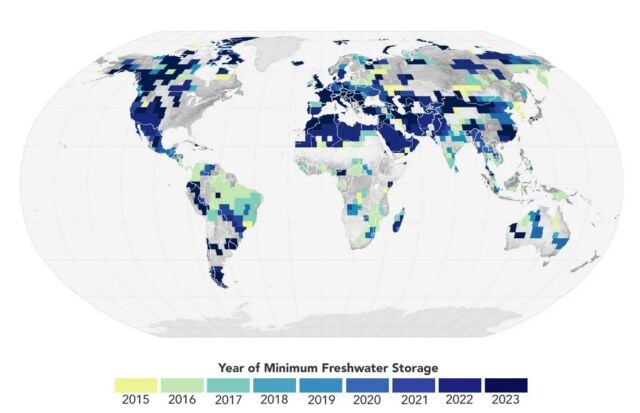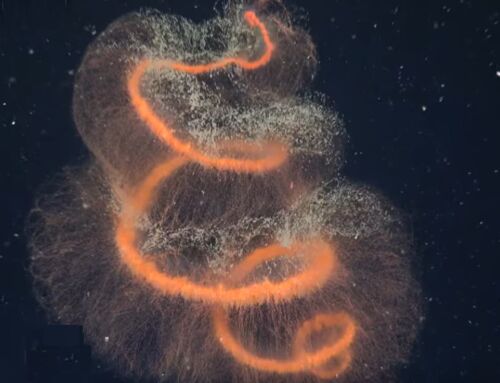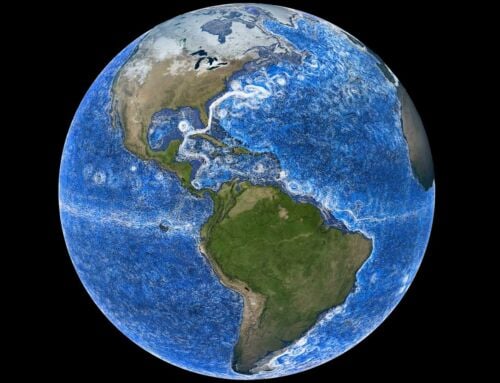 GRACE satellites. NASA/JPL-Caltech
GRACE satellites. NASA/JPL-Caltech
NASA using data from GRACE satellites, reveals a sudden drop in global freshwater levels.
An international group of scientists, using data from NASA-German satellites, discovered that Earth’s freshwater levels dropped sharply in May 2014 and have stayed low since. Their findings, published in Surveys in Geophysics, suggest this could signal a shift toward drier conditions across the continents.
Above: GRACE satellites measure gravity as they orbit the planet to reveal shifting levels of water on the Earth (artist’s concept). NASA/JPL-Caltech
Between 2015 and 2023, satellites recorded that the average freshwater stored on land — including lakes, rivers, and underground aquifers — was 290 cubic miles (1,200 cubic km) less than the 2002–2014 average. Matthew Rodell, a hydrologist at NASA’s Goddard Space Flight Center, explained that this loss equals about 2.5 times the volume of Lake Erie.
 This map shows the years that terrestrial water storage hit a 22-year minimum (i.e., the land was driest) at each location, based on data from the GRACE and GRACE/FO satellites. A significantly large portion of the global land surface reached this minimum in the nine years since 2015, which happens to be the nine warmest years in the modern temperature record. credit by NASA Earth Observatory/Wanmei Liang with data courtesy of Mary Michael O’Neill
This map shows the years that terrestrial water storage hit a 22-year minimum (i.e., the land was driest) at each location, based on data from the GRACE and GRACE/FO satellites. A significantly large portion of the global land surface reached this minimum in the nine years since 2015, which happens to be the nine warmest years in the modern temperature record. credit by NASA Earth Observatory/Wanmei Liang with data courtesy of Mary Michael O’Neill
Droughts, combined with expanding irrigated agriculture, have increased dependence on groundwater, leading to its depletion. Without enough rain or snow to replenish these supplies, more groundwater is pumped, creating a vicious cycle of scarcity. This water shortage strains farmers and communities, raising risks of famine, poverty, conflict, and disease, as people may resort to using contaminated water, according to a UN report on water stress.
source NASA





Leave A Comment